MALTA: A SURPRISE AT EVERY TURN
Malta was not on my travel radar at all. I may have had fleeting thoughts about it when I learned about its Game of Thrones connection (it was a filming location for the show’s first season). However, it was not serious enough to put it on my immediate To-Go list. I had to take a few minutes to find it on a map. I had an idea that it was somewhere in the Mediterranean Sea, but didn’t know it was about 50 miles south of Italy and sitting just above the North African countries of Tunisia and Libya.
A conference assembling organization leaders and country representatives of European-Filipinos was what finally brought me over to this tiny island nation in the heart of the Mediterranean. And for that, I am eternally grateful to the European Network of the Filipino Diaspora for selecting Malta for their second regional conference.
I arrived on late balmy summer night at the Malta International Airport on the same flight from Dublin as two Ireland-based Filipinas who were performing a puppet show at the conference. We shared a ride with two Belgian-Filipino ladies, a teacher and a sociologist. We drove through sleeping towns, getting acquainted with each other. The nighttime darkness cloaked the country, like a magician waiting for the right time to pull the covers back to reveal the magic within.
Owing to its strategic location between Europe and Africa, the tiny archipelago has witnessed a parade of colonizers and occupiers, including the Phoenicians, Romans, Moors, Normans, Sicilians, Spanish, French and British. The Order of the Knights of St. John figure prominently in its history. It has been been cited in the Bible as the island where St. Paul the Apostle and his companions were shipwrecked after a violent storm.
ENFID
My first three days were occupied by the second regional conference of ENFiD during the day. In the evening, there were cultural activities, networking and fellowship with the attendees. It was lovely meeting Filipinos living in different parts of Europe, including Belgium, Czech Republic, Ireland, the UK, Switzerland, Sweden, Germany, Italy, and Malta. As a Filipino-American, it was fascinating to hear their stories of integration into the cultures of their respective countries.
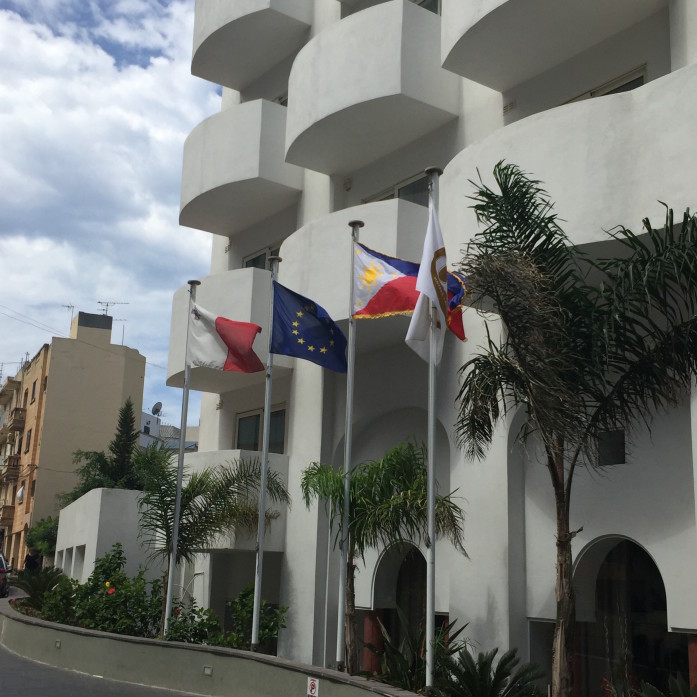
The Philippine flag at conference venue DB San Antonio Hotel

ENFiD Board of Directors with Atty. Rodel Rodis of US Pinoys for Good Governance
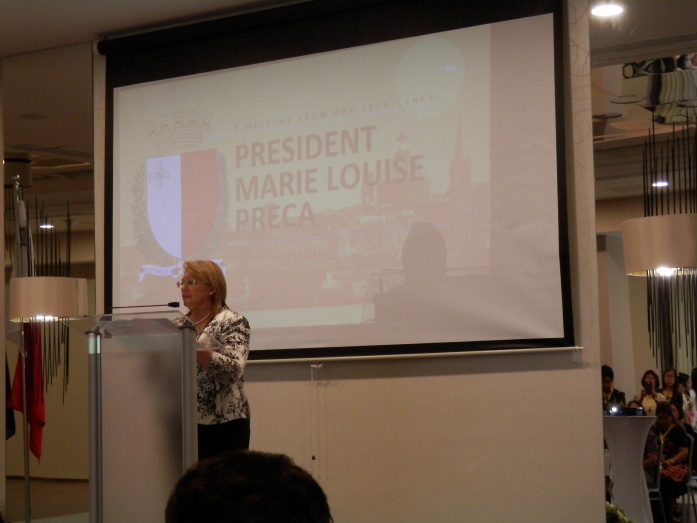
Her Excellency Marie Louise Preca, President of Malta delivered an inspirational message during the conference

Her Excellency Marie Louise Preca, President of Malta at the conference

Conference attendees on the City Tour Bus to Valletta
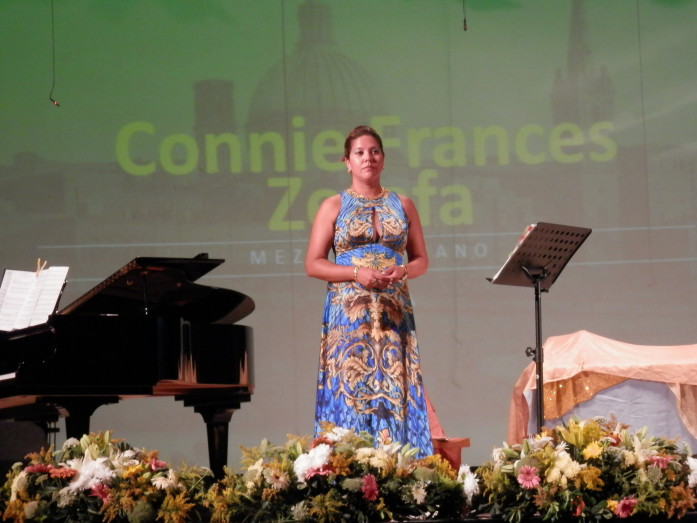
Connie Frances Zerafa, Mezzo Soprano

Dawn Zabala Dickey and Vanda Macion-Brady performing a puppet show presentation of The Healing Song of the Adarna Bird

Stephanie Reese, Soprano, and John Florencio, Pianist

Paul Curmi Dance Company

Farewell Dinner
ST. PAUL’S BAY
I had gotten the hang of walking along the seaside promenade of St. Paul’s Bay between my hotel, the Gillieru Harbour Hotel, and the conference venue DB San Antonio. Locals and tourists laid out in the rocky beach, taking in the scorching Maltese mid-summer heatwave.
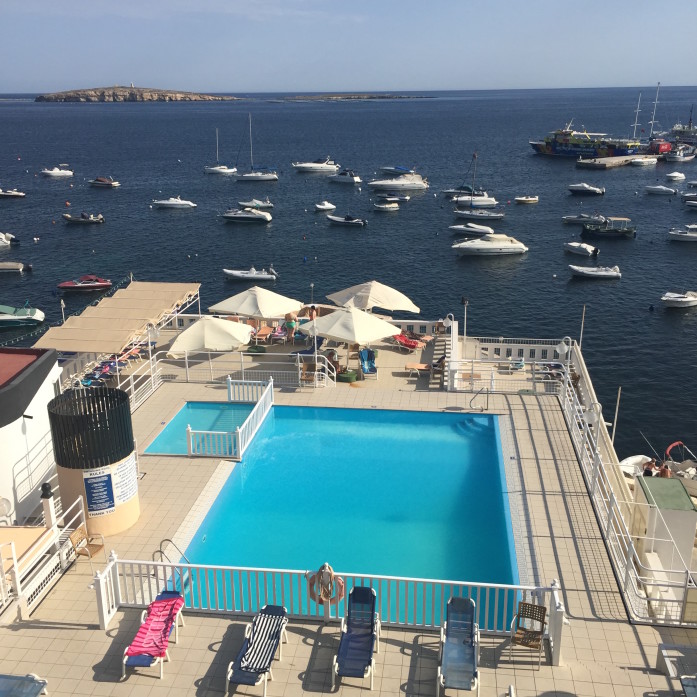
View of St. Paul’s Bay from my hotel room, with St. Paul’s Island in the distance
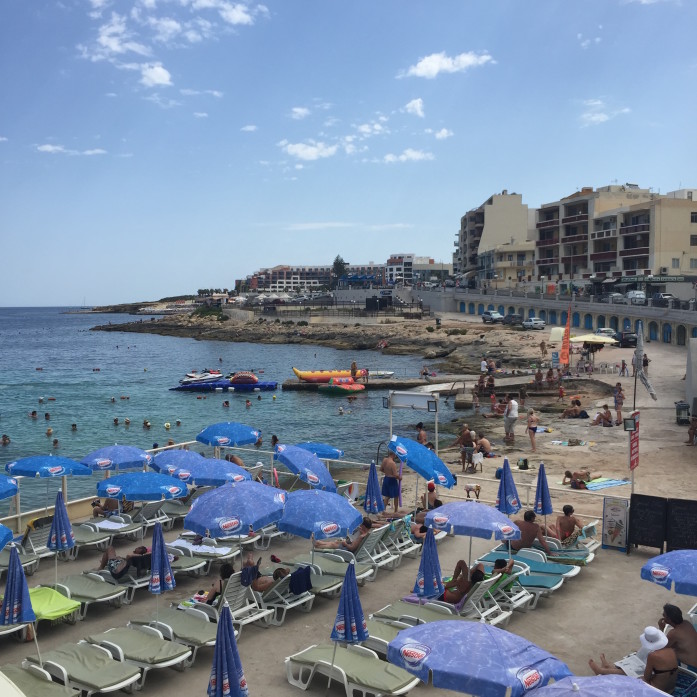
Summer beachgoers in St. Paul’s Bay
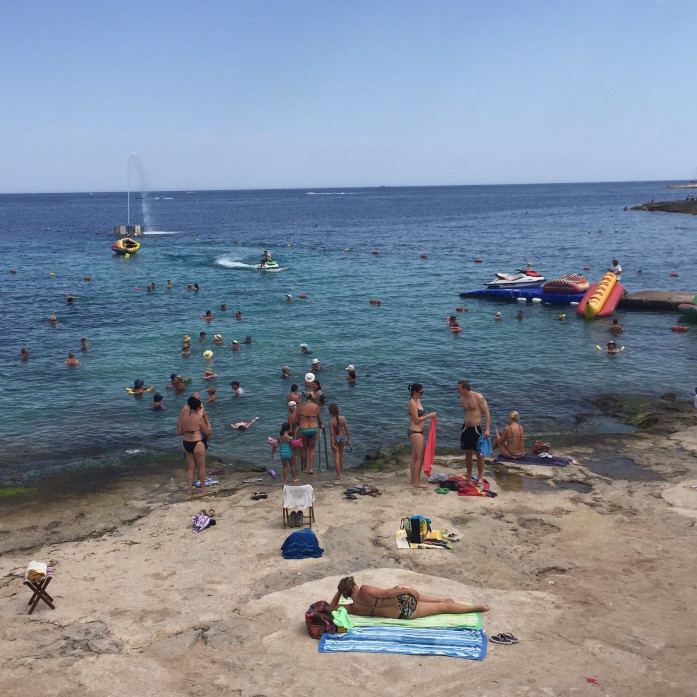
Summer beachgoers in St. Paul’s Bay
It was here where I saw was the most idyllic location for a McDonalds.
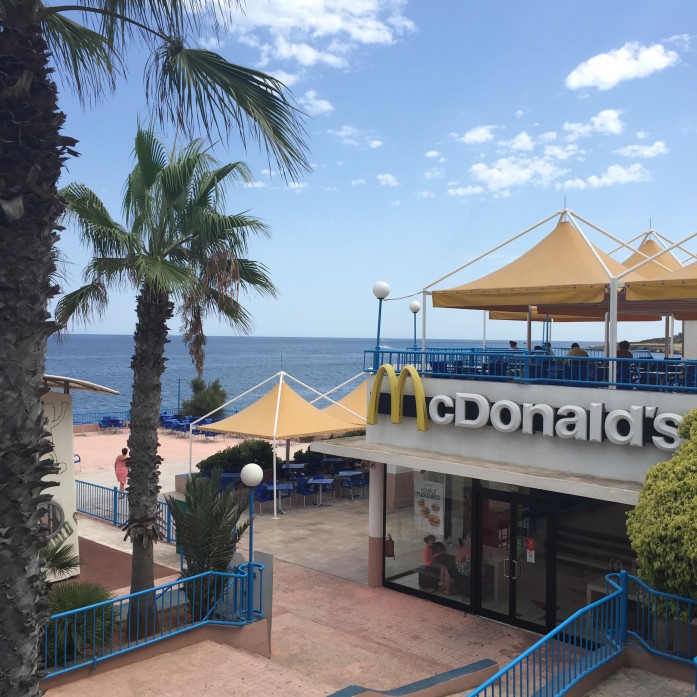
McDonalds in St. Paul’s Bay
Beside my hotel is a small chapel that marks the spot where the locals lit a fire for the shipwrecked Apostle Paul, whose encounter with the island was documented in the Acts of the Apostles.
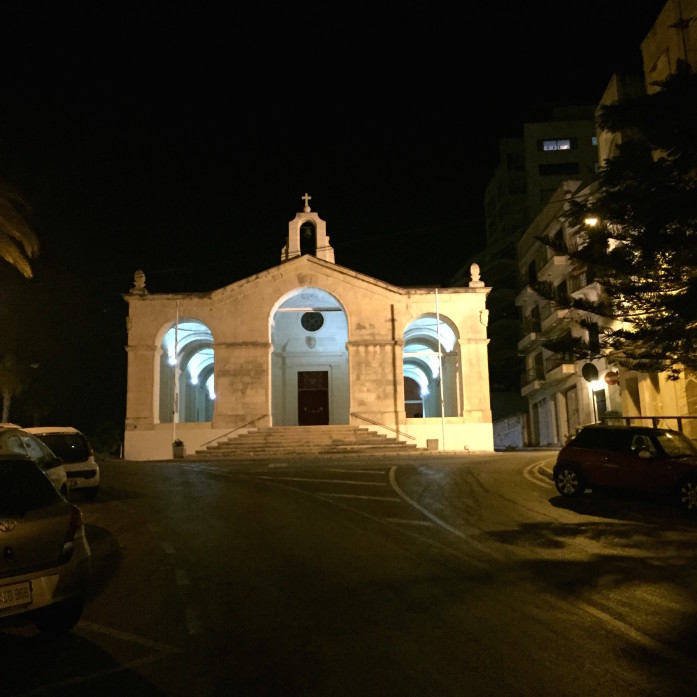
St.Paul’s Chapel, also known as Shipwreck Chapel and Chapel of the Bonfire
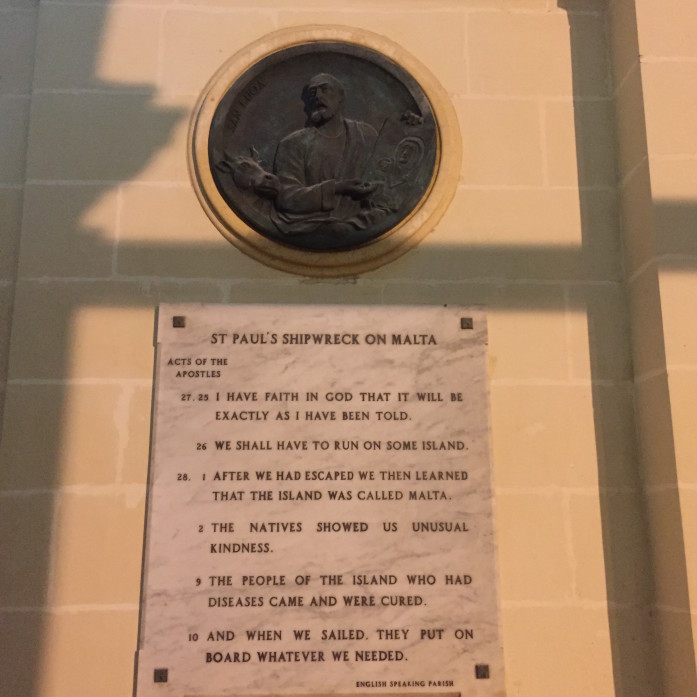
Verse from Acts of the Apostles referring to Paul’s shipwreck in Malta
After wrapping up the conference, my Maltese adventure went to its next phase.
GOZO HOP ON HOP OFF
Along with a Filipina IT professional working in the Czech Republic, I left the main island of Malta onboard a ferry that took us to the second largest island, Gozo, in a swift twenty minute ride. Aboard the Hop-On, Hop-Off bus, we meet up with three more Filipinas whom we met at the conference: a local and two attendees from Israel.
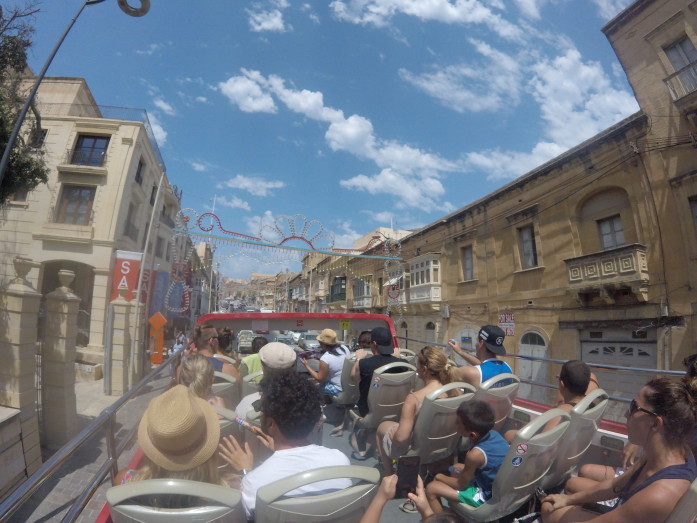
On the Hop On Hop Off bus in Gozo
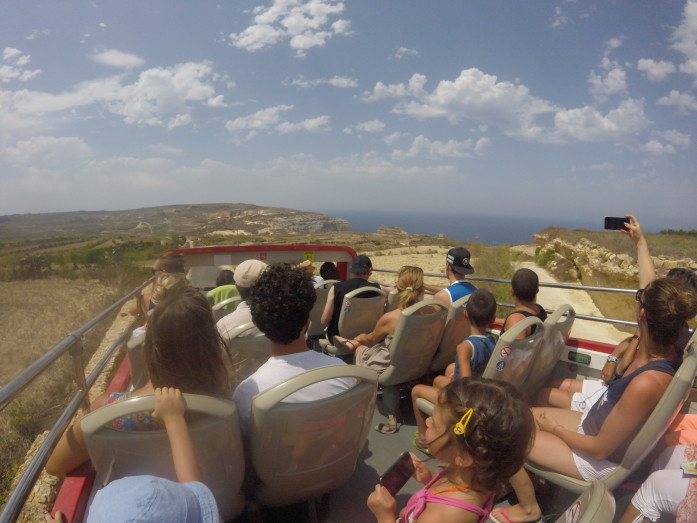
On the Hop On Hop Off bus in Gozo
Over the course of a day, we made several stops around the island that included a filming location for Game of Thrones, an archeological site of an ancient temple complex that is 2000 years older than Stonehenge and lunch at a serene harbor.
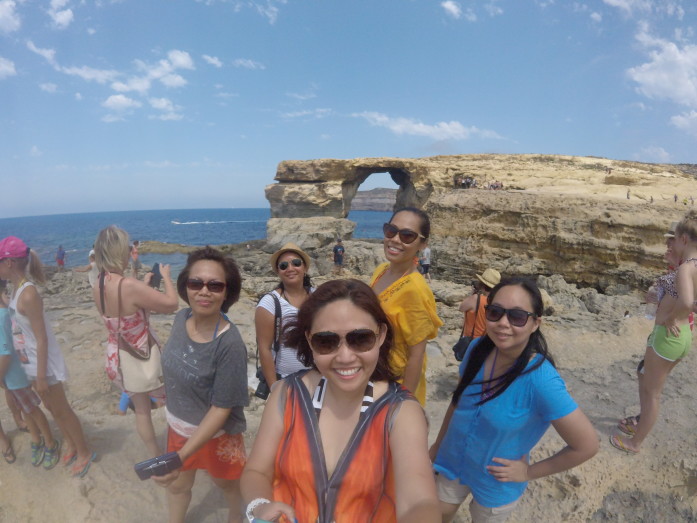
Azure Window with some Viajera Filipinas
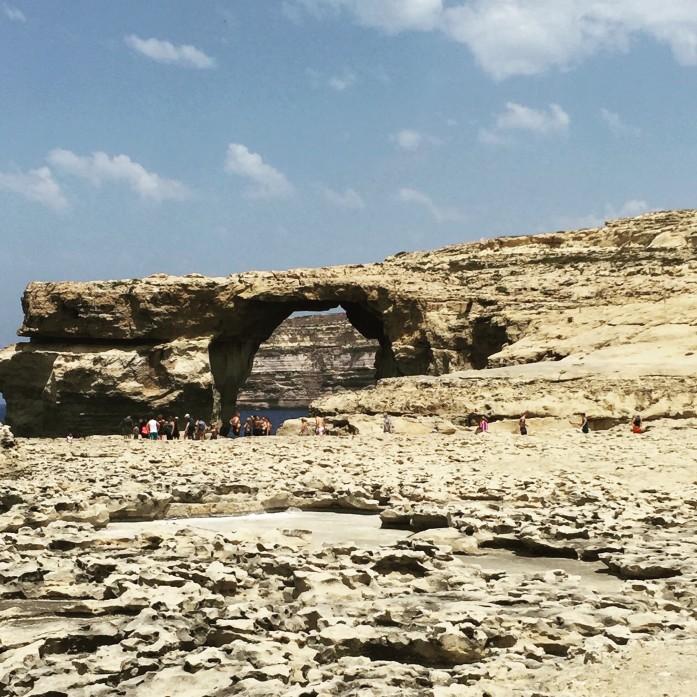
Azure Window
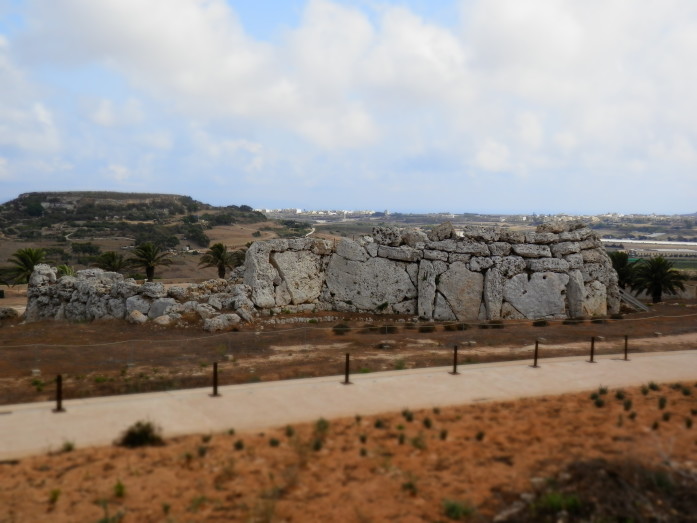
Ggantija Temple in Gozo, one of several ancient megalithic temple complexes in the country
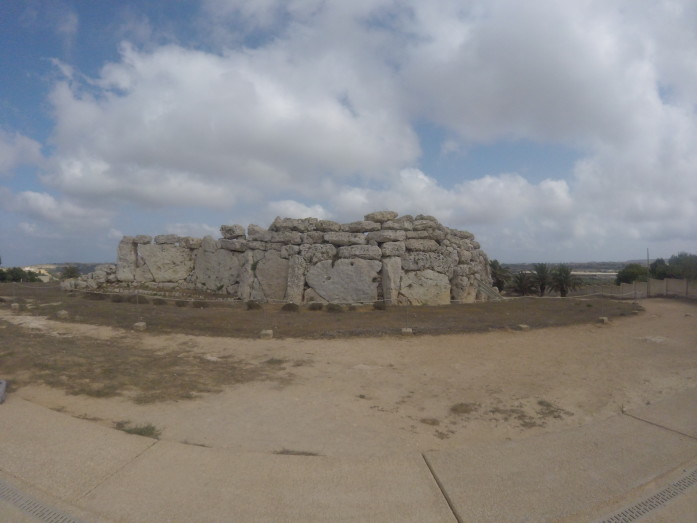
Ggantija Temple in Gozo, one of several ancient megalithic temple complexes in the country
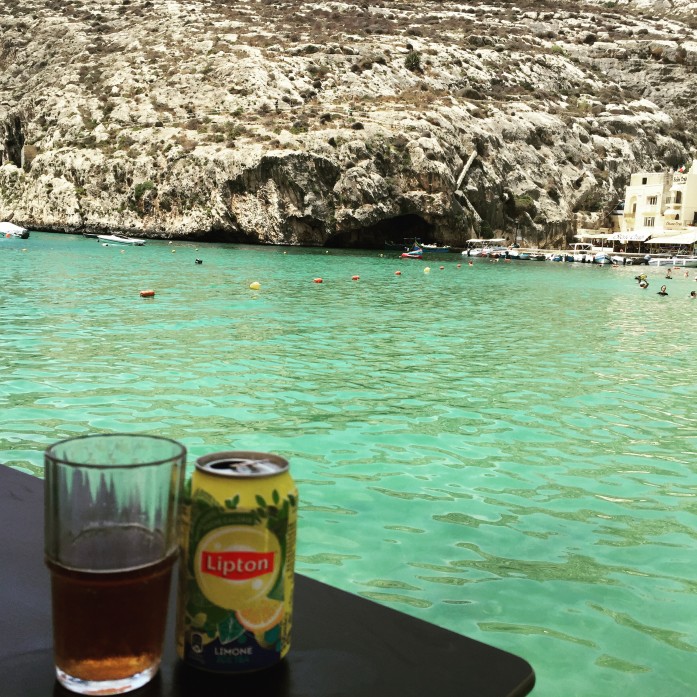
Lunch at Xlendi Bay
We ended a day with a dip in the cool Mediterranean sea in Marsalforn, a popular beach area. We initially thought we hit the jackpot when, upon our local girl’s suggestion, came up to an arc of beach that was beautiful and virtually empty. We thought we had found out little piece of paradise. While the location worked well for our impromptu pictorial session, the surface underwater was too slippery and the current too strong. We settled at another spot and enjoyed a relaxing swim.
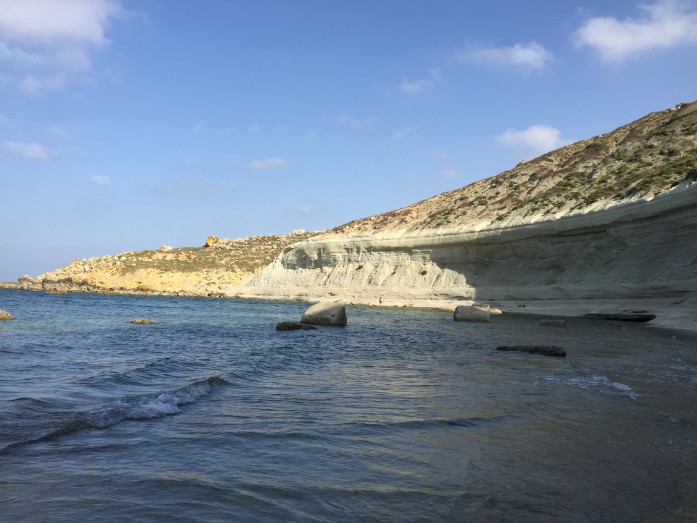
Marsalforn Beach
After a lovely afternoon with Euro-Pinays, I said goodbye to them and took a local bus to the home of my Airbnb hosts for the night.

Lovely Viajera Filipinas from Malta, Israel and Czech Republic
Sannat
Peter and Helena had renovated and restored a 400-year old traditional farmhouse made of limestone. They brought it to the 21st century with solar panels with which they generated their own electricity. They had done such a marvelous job with the house. I was particularly floored by the guest bathroom that I was to use.
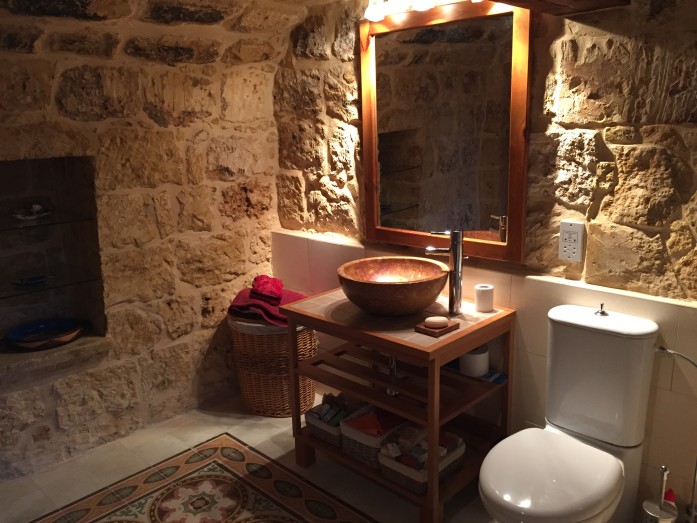
Beautiful bathroom
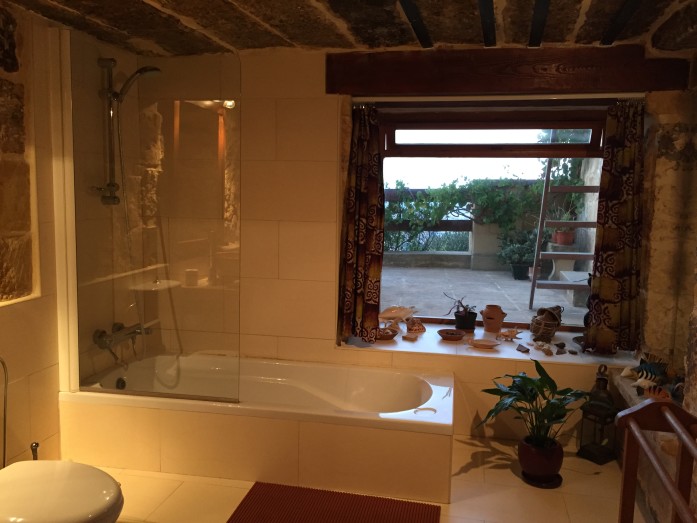
Beautiful bathroom
Peter, a retired engineer from Wales, tended a beautiful garden with succulent plants and vibrantly colored flowers.
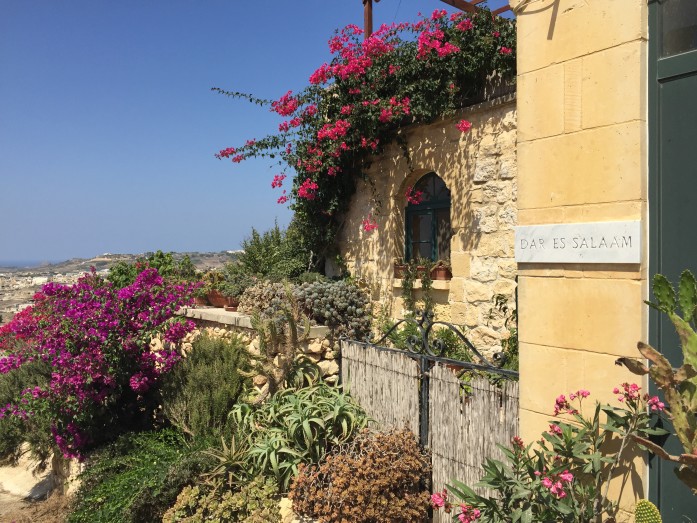
Peter and Helena’s Garden and Plants
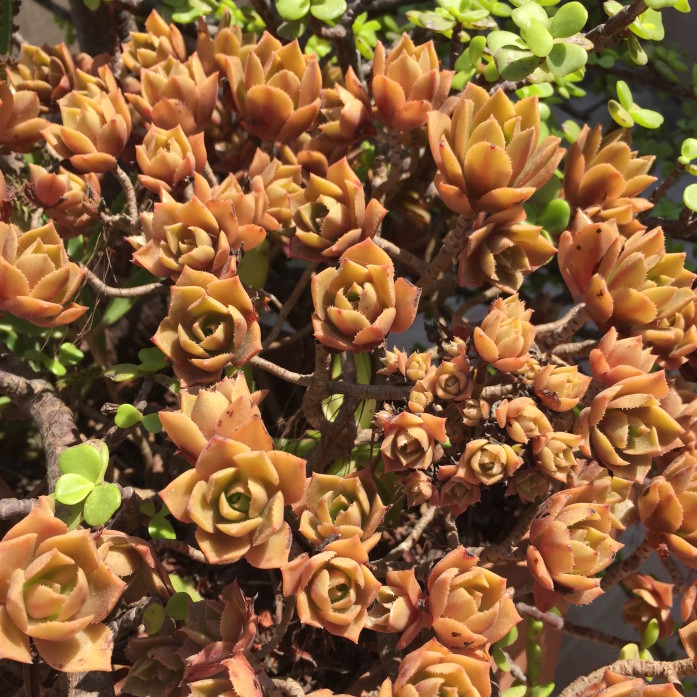
Peter and Helena’s Garden and Plants
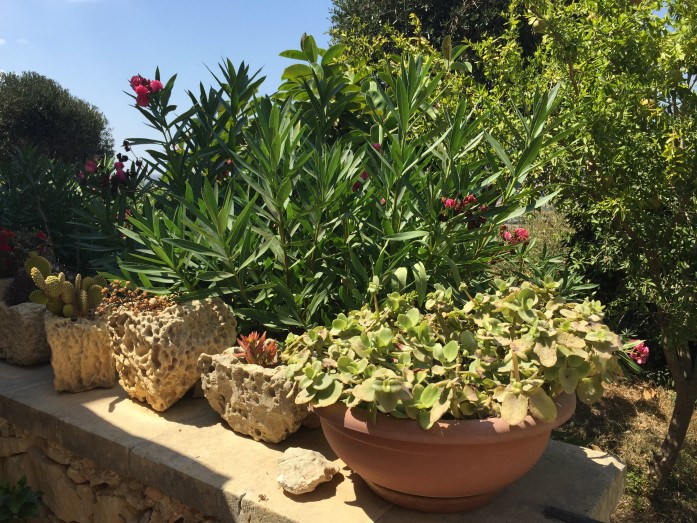
Peter and Helena’s Garden and Plants
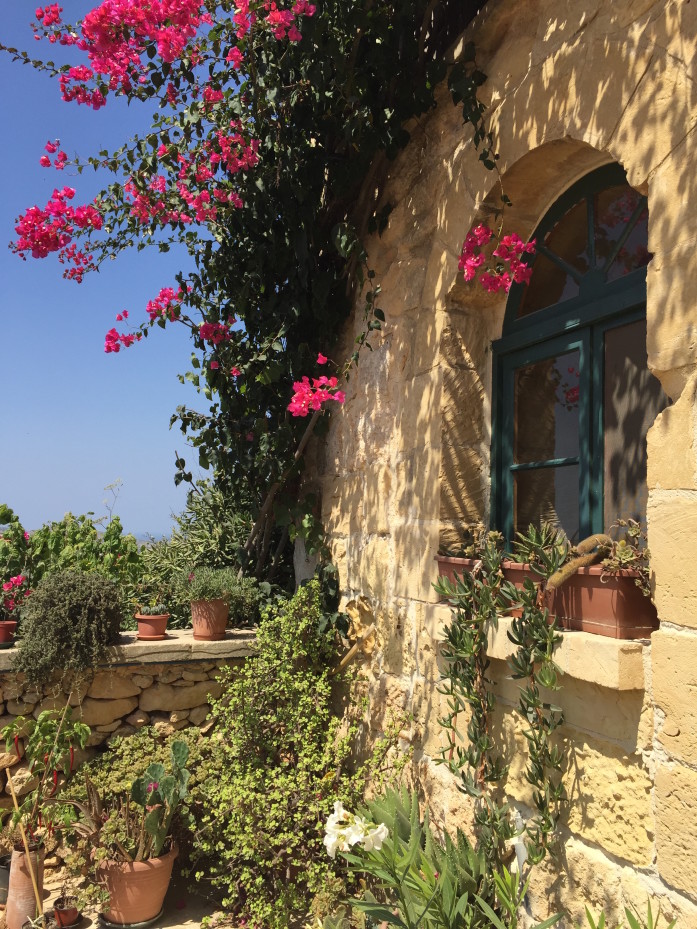
Peter and Helena’s Garden and Plants
My room was true to its Airbnb description. It was a cozy cave whose limestone walls cooled down the hot summer air, allowing me to sleep with just a fan on.
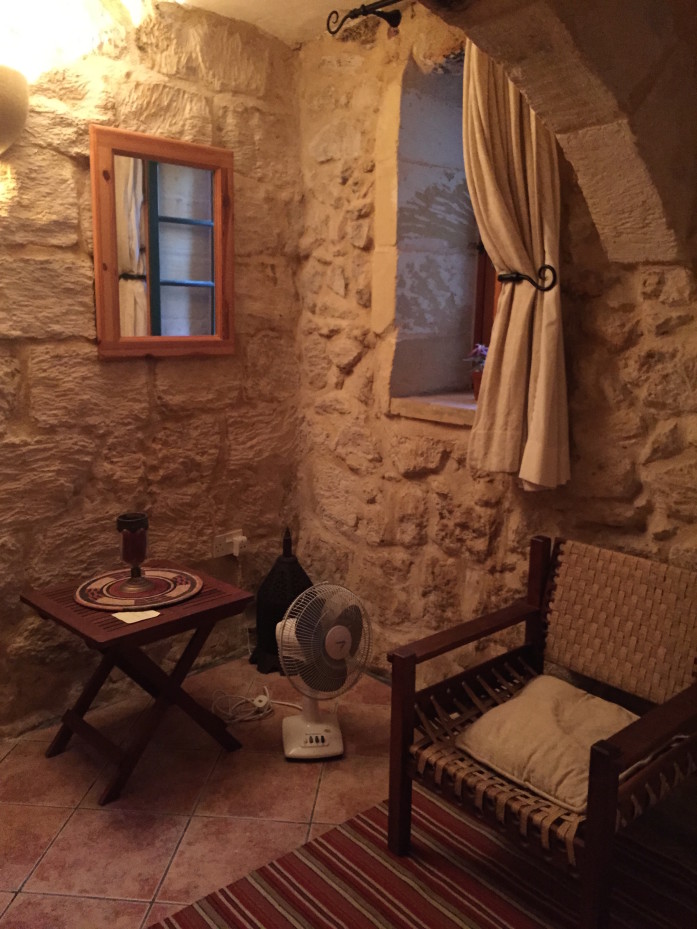
Cozy cave room
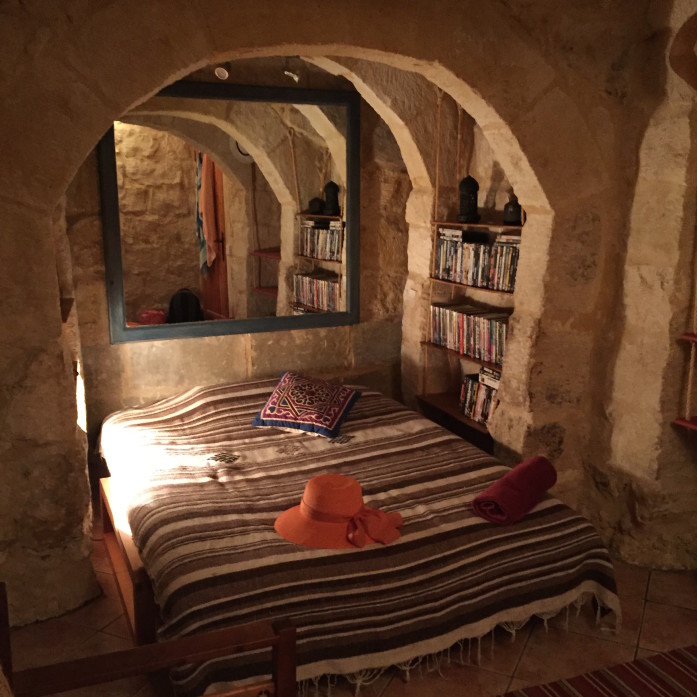
Cozy cave room
Ta’ Cenc
After a lovely breakfast, Helena, a pharmacist and certified naturopath originally from Hungary, walked me over to the Ta Cenc cliffs which were just behind their house. There she introduced me to what seemed like her private paradise: a vast rocky flat area of limestone, punctuated with brushes and plants mostly browned by the summer heat. She would occasionally break off a few branches and shared it with me to smell the fresh thyme that grew abundantly there. She talked about how the whole place was transformed with colorful flowers in the spring and fall seasons. It is also during those months when birds flock to the cliffs, as Ta’ Cenc is a bird sanctuary and a considered an important bird area.
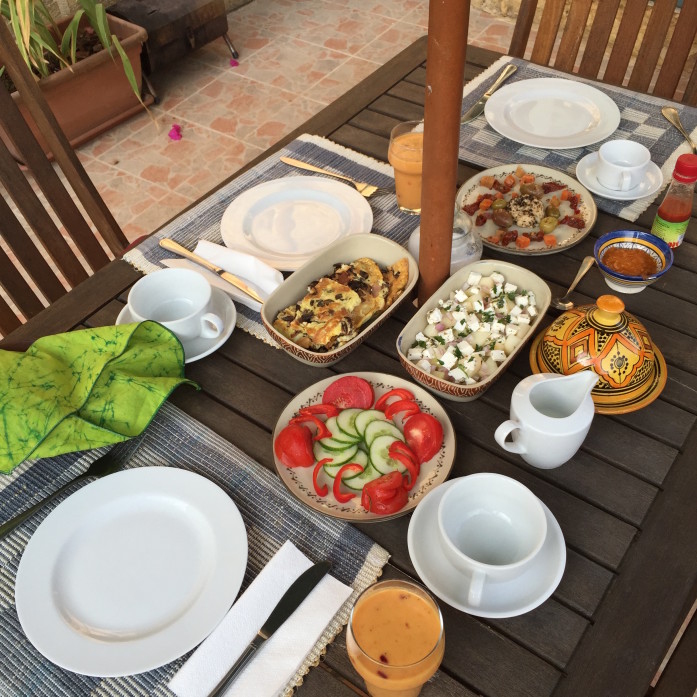
Breakfast at Sannat
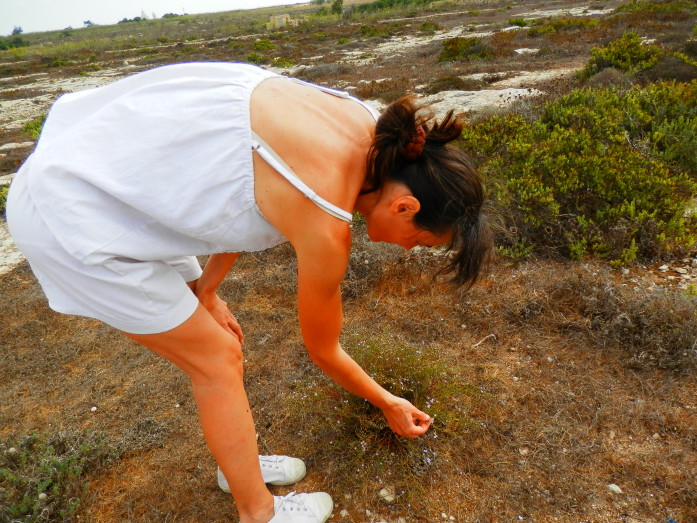
Helena picking up thyme
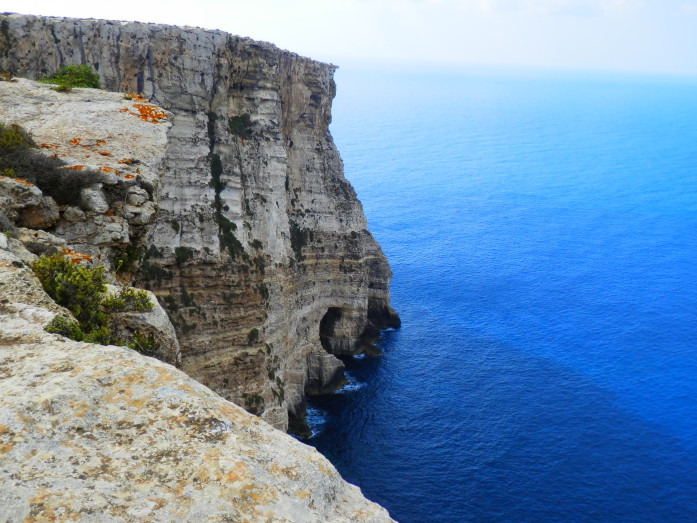
Cliffs of Ta’ Cenc
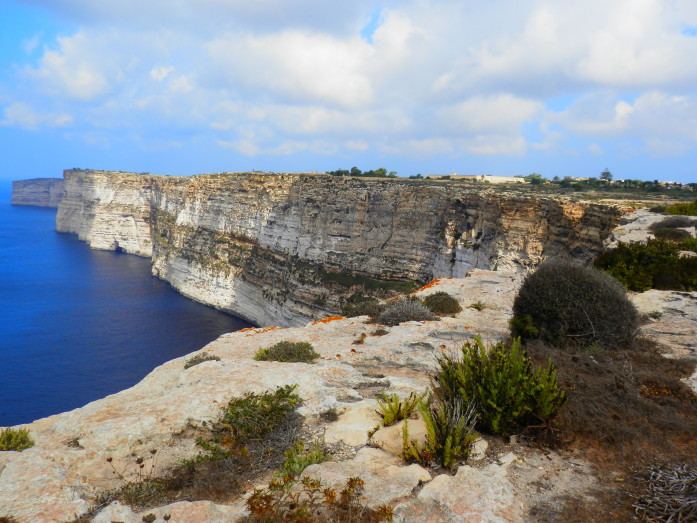
Cliffs of Ta’ Cenc
After joining me in a death-defying stunt of peeking over the edge of the cliff on our bellies, Helena headed home and I asked to stay behind to take in the place.
It was a 120 meter drop from the top of the rugged cliffs into the sea below. There were no railing or guards to stop you from jumping or falling over. There was no one else around in the hour that I spent walking and sitting by the cliffs. I peeked a few more times over the edge and the experience was an exhilarating mix of fear and freedom.
Cart Ruts
In the surrounding rocky areas, I came upon some cart ruts that were the subject of a recent History Channel documentary I saw. Cart ruts, or cart tracks, are deep grooves and channels, usually found in pairs with a small cart’s width of 140 cm, left in Malta’s limestone surfaces all over the islands. There are a lot of debate on how these lines were formed and why. Their origin, function and makers remain a mystery. Theories include prehistoric highways, irrigation paths, with talks of ancient alien influence thrown in for good measure.
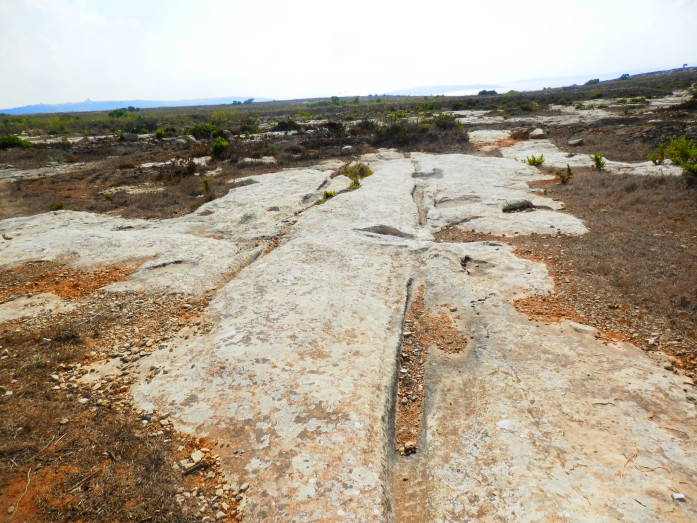
Cart ruts
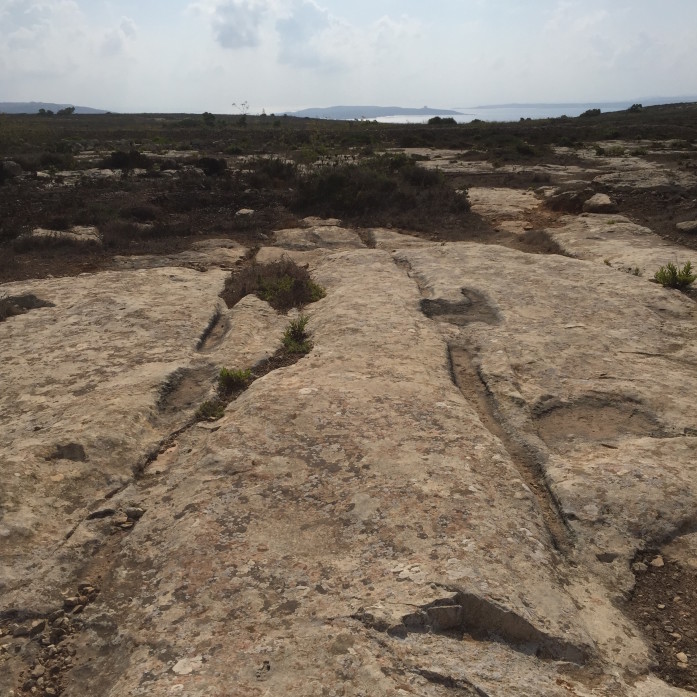
Cart ruts
Victoria and Gozo island life
One of the most enjoyable things that I did on this trip was to slow the pace down and imbibe the life of a local. I took the bus from Sannat to Victoria, the capital city of Gozo. While the city boasts of the impressive medieval Cittadella, it was riding the local bus, roaming around the streets and sitting in a cafe that were most memorable.
Capping my all too brief stay was a scooter ride to the harbor for my ferry ride back to the main island, courtesy of Peter. Zipping through the town, wide brimmed hat flapped underneath the motorcycle helmet, giving me intermittent last glimpses of the quiet streets of Gozo.
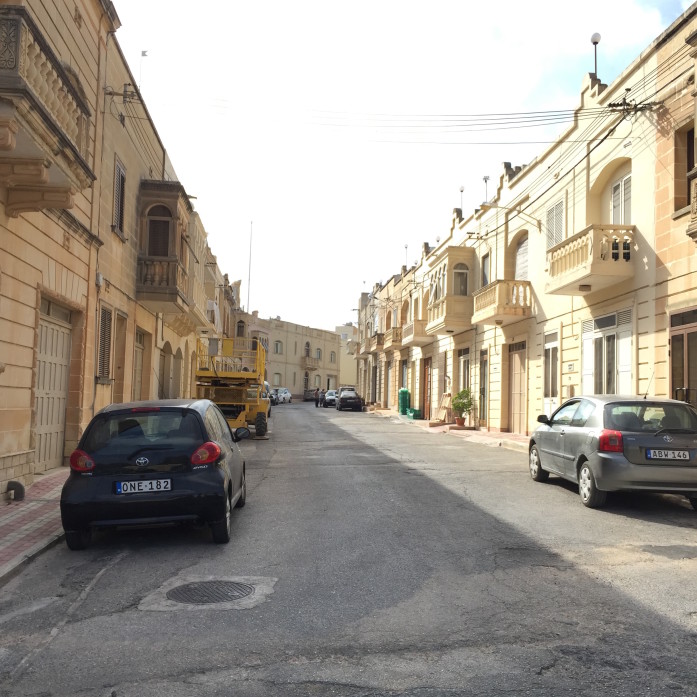
The streets of Gozo
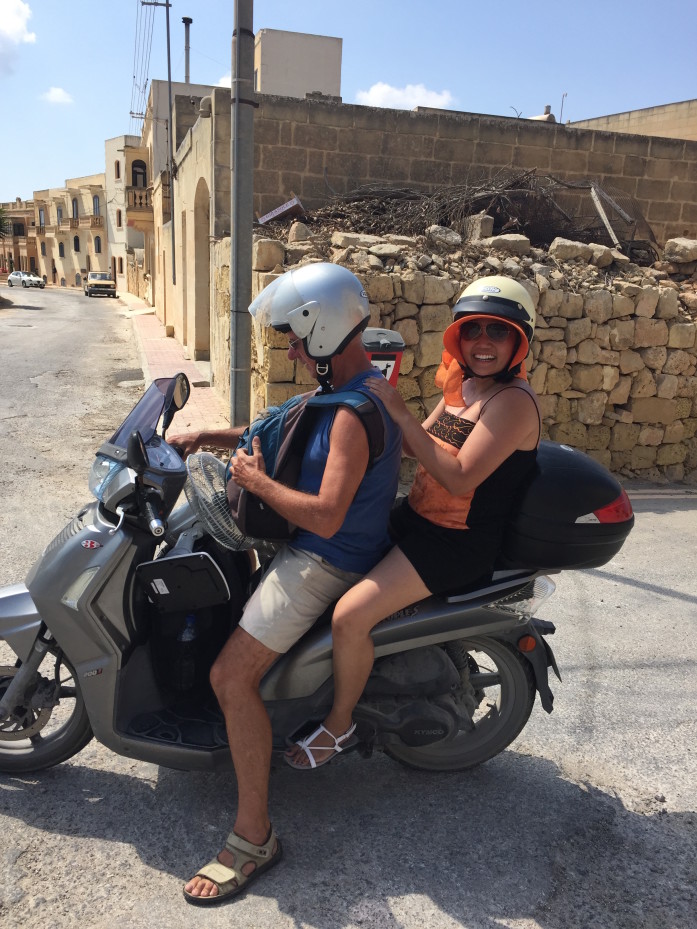
Hitching a ride on Peter’s scooter
VALLETTA
With another ferry ride back to the main island, I was in the historic old city of Valletta. A taxi brought me to my home for the night, another AirBnb property in the heart of the district. My host Charles oriented me to his modern apartment tucked within a historic building, with an excellent advice to check out the roof top views.
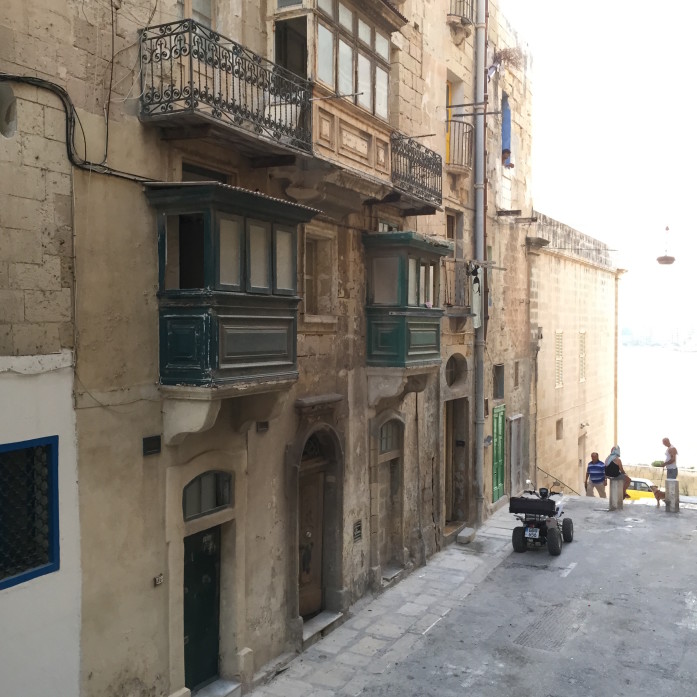
View from the window of my Valletta apartment
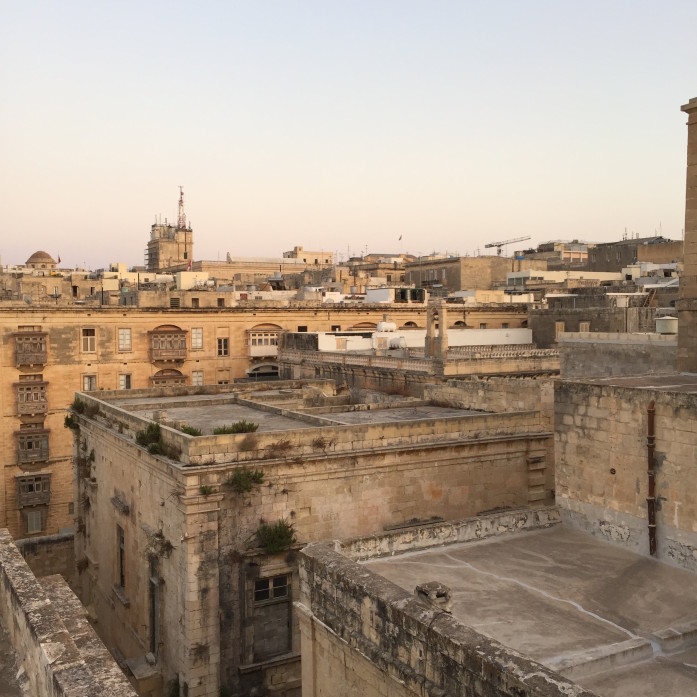
Rooftop view
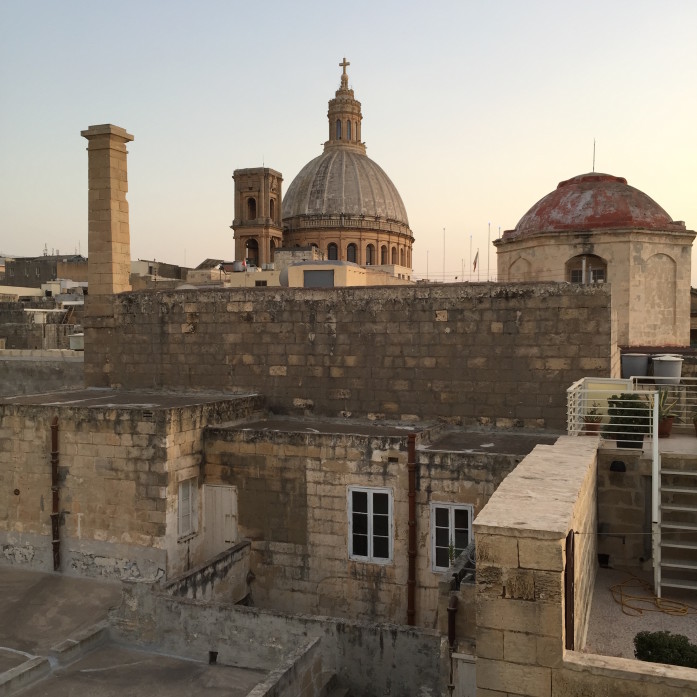
Valletta Airbnb apartment – Rooftop view
The chic apartment with its modern style and amenities was a contrast to the organic farmhouse feel of my previous stay in Sannat, but was just as lovely.
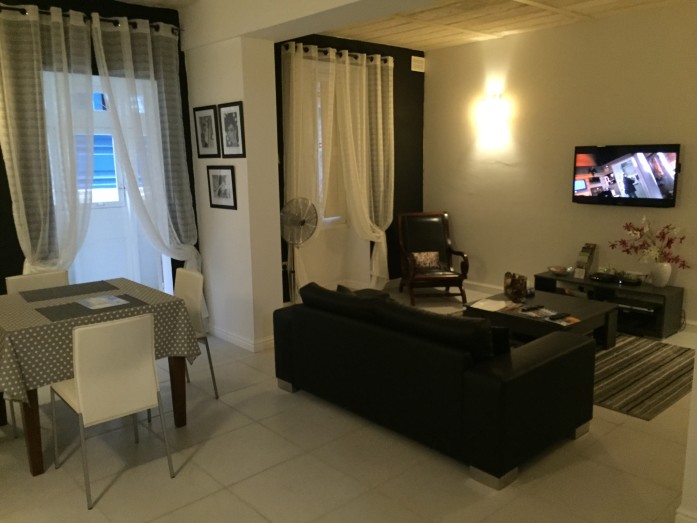
Valletta Airbnb apartment
I took a free walking tour of the historic center with Jennifer, a guide who gave us a brief but informative overview of the city’s storied past. She also introduced us to the prominent attractions of the area for us to explore at our own pace.
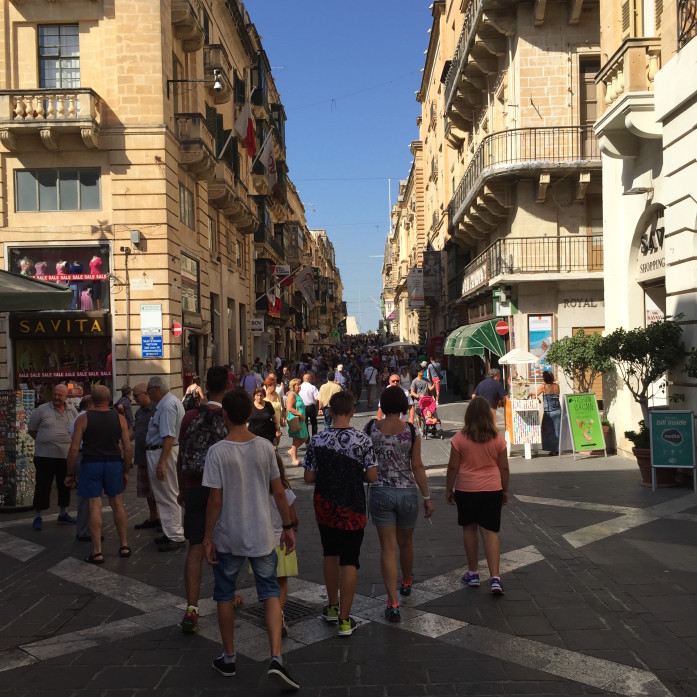
Walking Tour of Valletta
Valletta traces its history to its founding fathers, members of the Knight of John, a Roman Catholic military order who came to live in Malta after being ejected from Jerusalem by the occupying Moors. With buildings that date back to the 16th century and onwards, Valletta has a distinguished past that involved repelling invading Ottoman Turks in what is known the Great Siege of Malta in 1565. Later, it was occupied by French and British forces. It has been selected as a European Capital of Culture for 2018, which the city is starting to prepare this early with restoration and renovation projects.
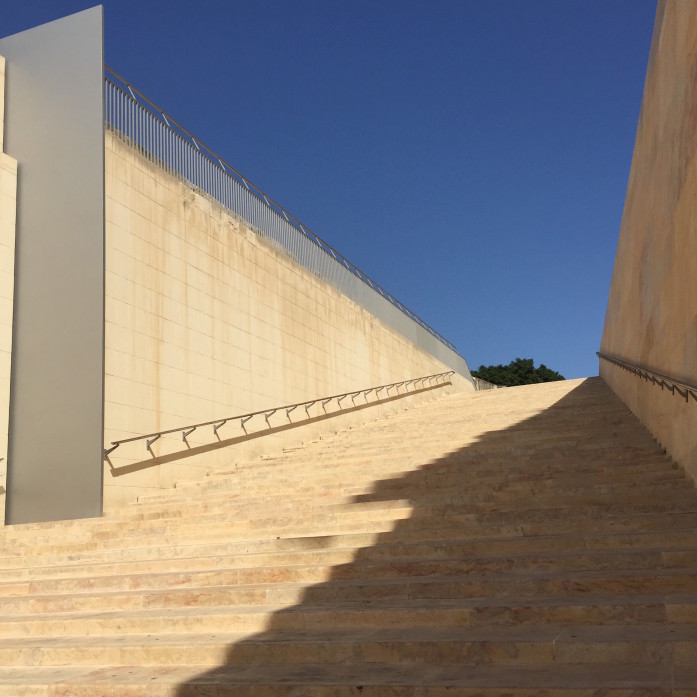
Renzo Piano Steps
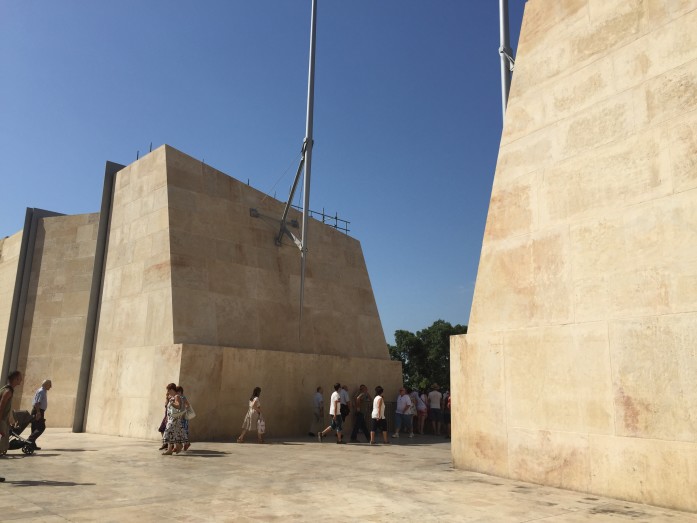
The new City Gates by Renzo Piano
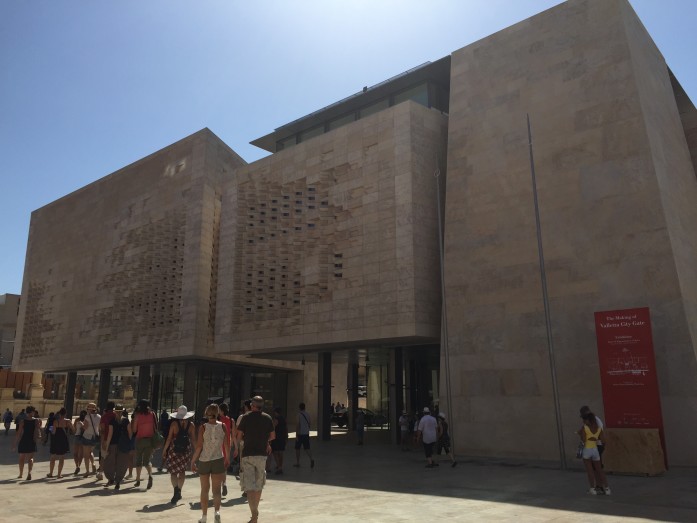
New Parliament Building by Renzo Piano
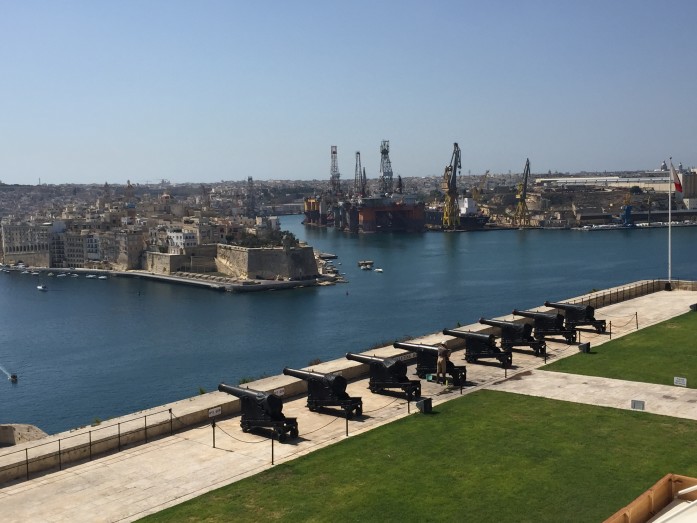
The Battery by the Grand Harbour
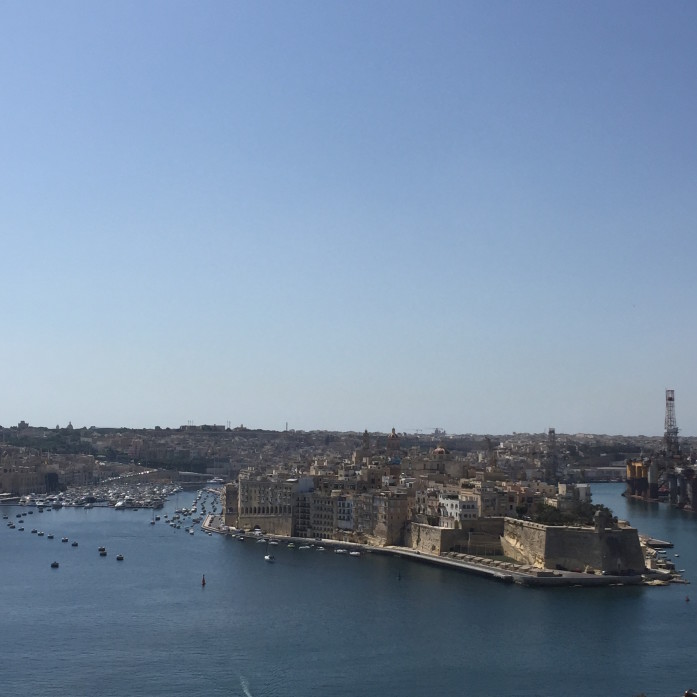
View of the Grand Harbour from the Upper Barraka Gardens
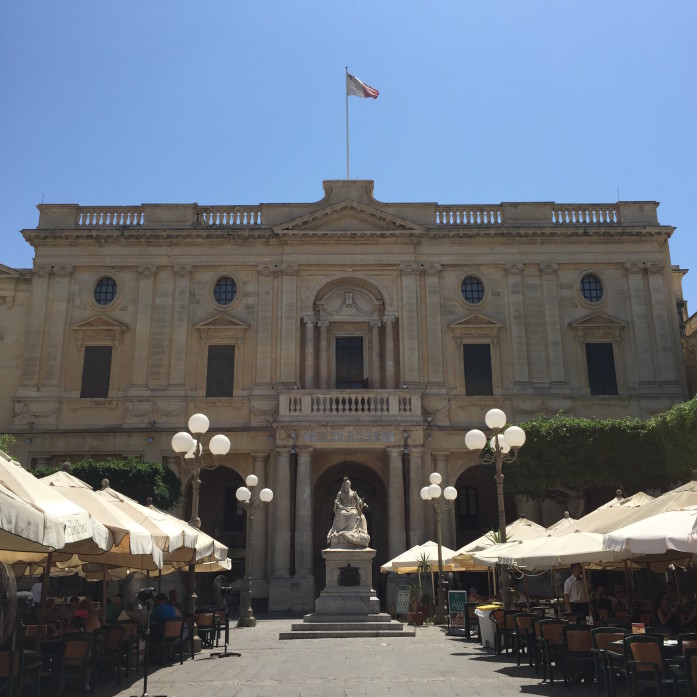
The Old Library
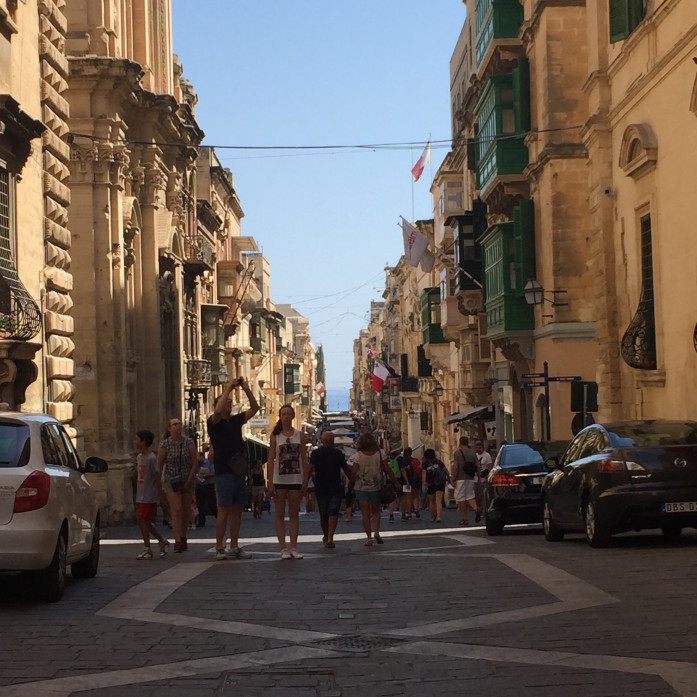
Valletta Street Scene
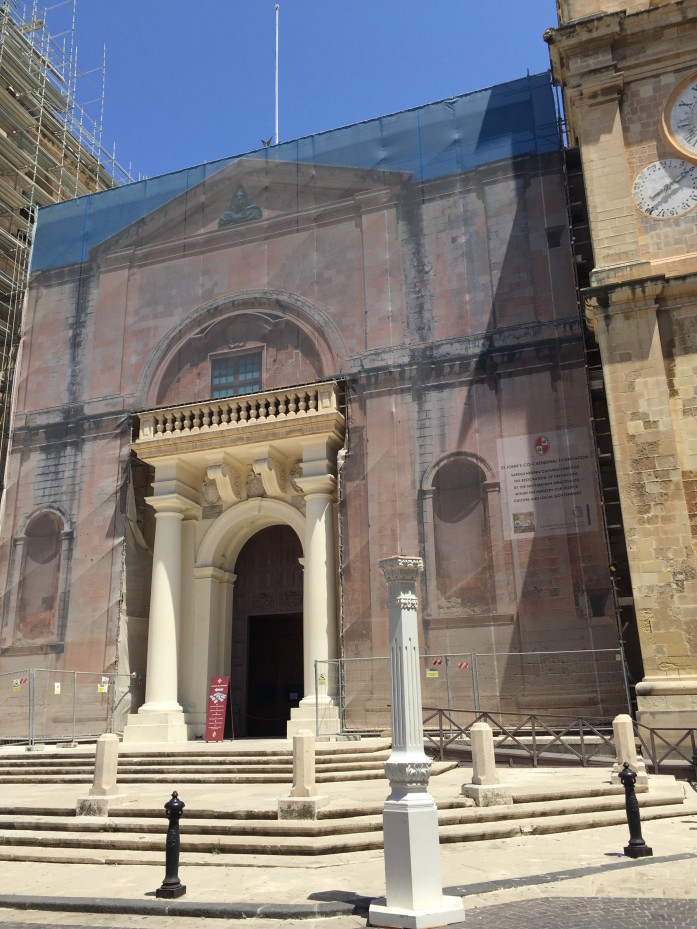
St. John Co-Cathedral with facade under renovation
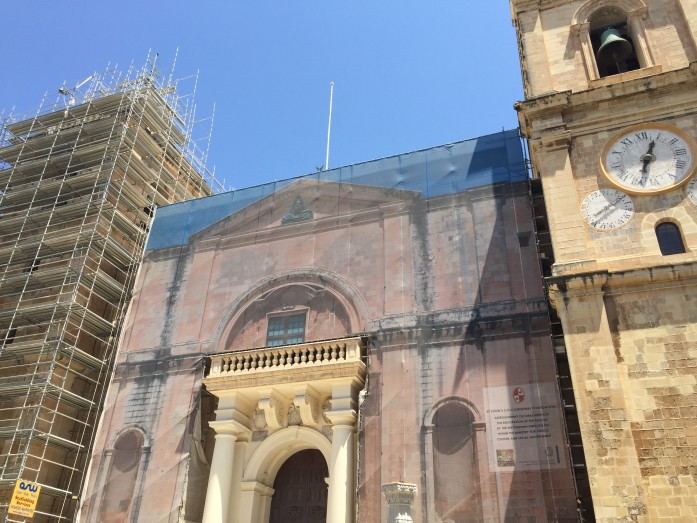
St. John Co-Cathedral with facade under renovation
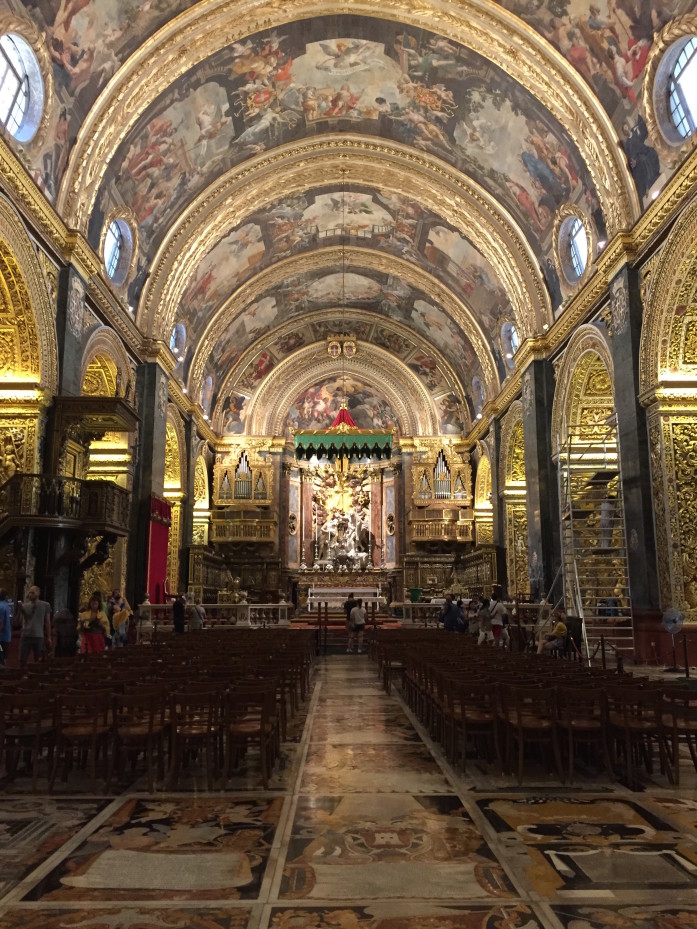
Inside St. John Co-Cathedral
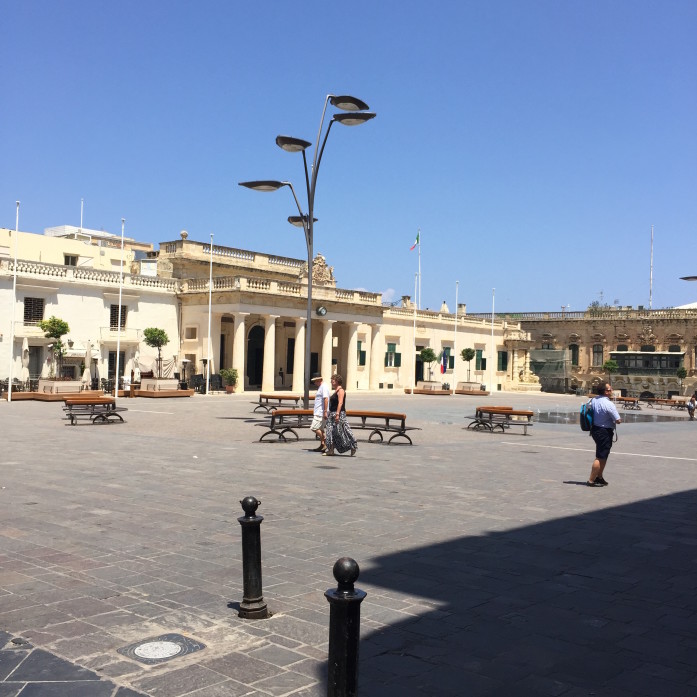
St. George’s Square
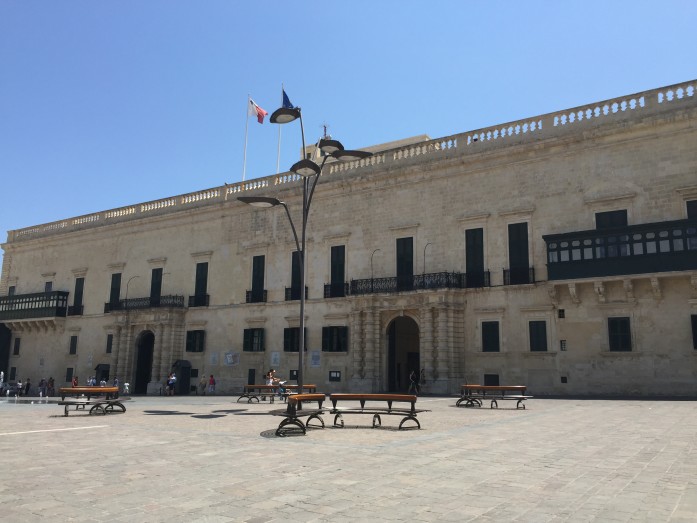
The Grandmaster’s Palace, now the Presidential Palace by St. George’s Square
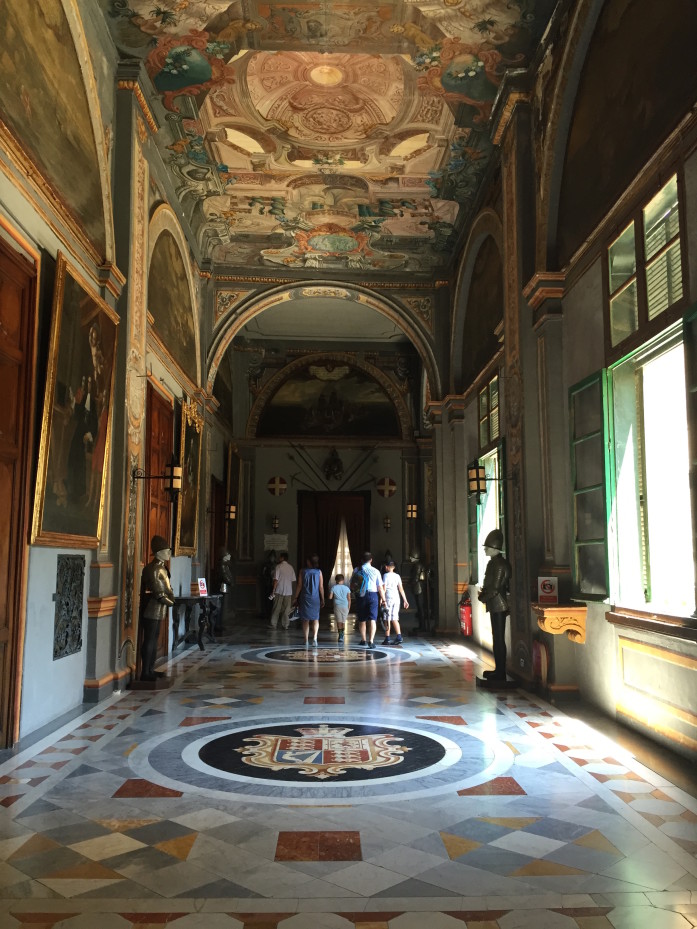
Inside the Grandmaster’s Palace, now the Presidential Palace
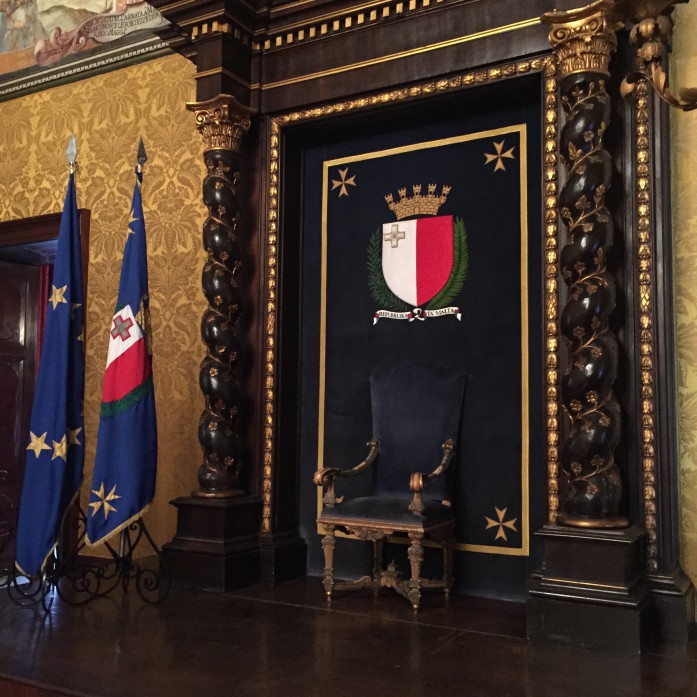
Inside the Grandmaster’s Palace, now the Presidential Palace
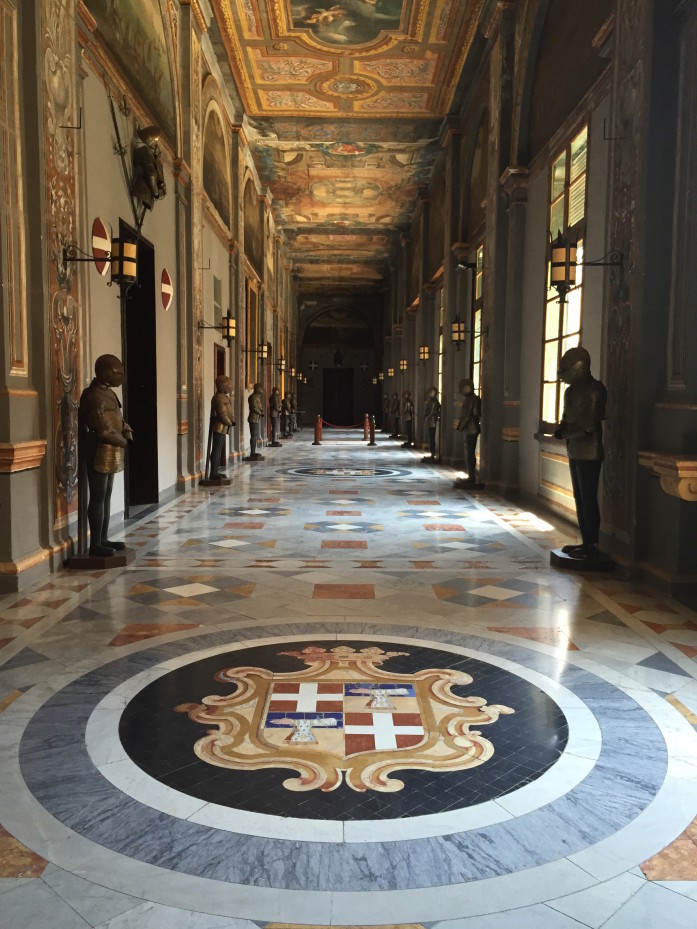
Inside the Grandmaster’s Palace, now the Presidential Palace
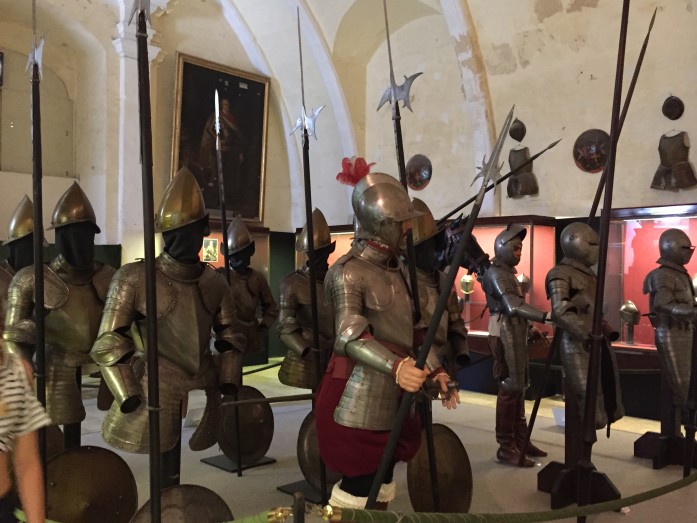
The Armory Inside the Grandmaster’s Palace
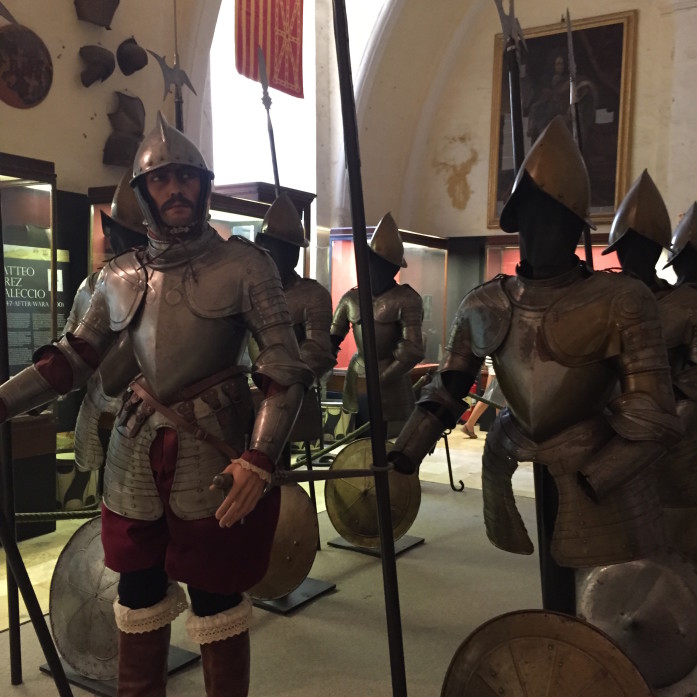
The Armory Inside the Grandmaster’s Palace
MDINA
Mdina is a medieval walled town west of the Valletta and was a capital at some point. Its architecture is largely influenced the Arab Period of the 800s and 900s. Known as the Silent City, it is filled with quiet alleyways and empty lanes, barely seeing any of its 300 residents. My interest in coming to this beautiful city is related to my obsession with Game of Thrones. Several iconic scenes from the show’s first season were filmed here.
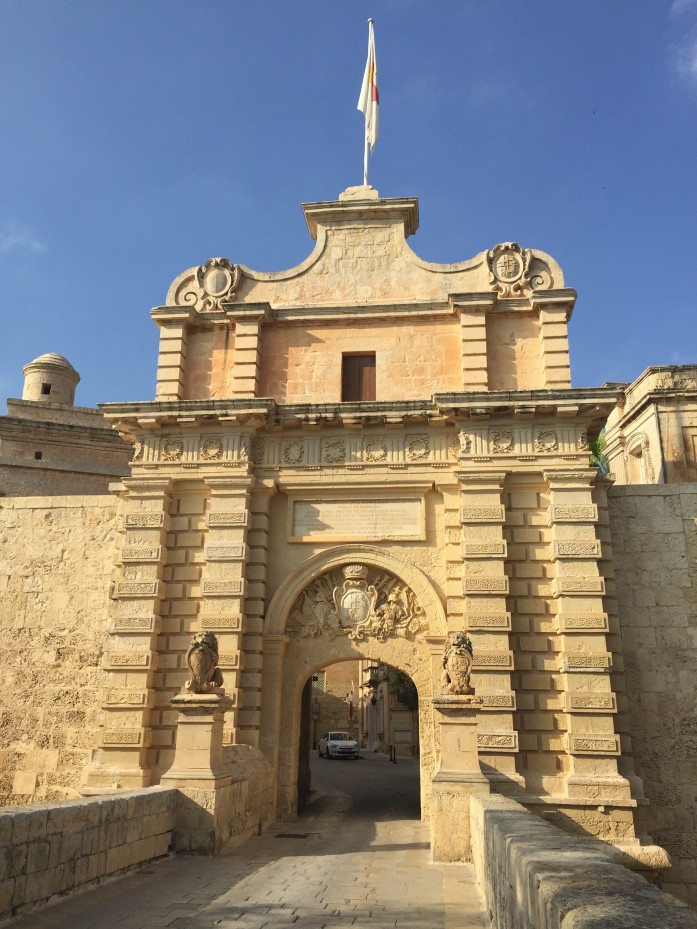
The City Gates of Mdina, which once stood for King’s Landing in Season One of Game of Thrones
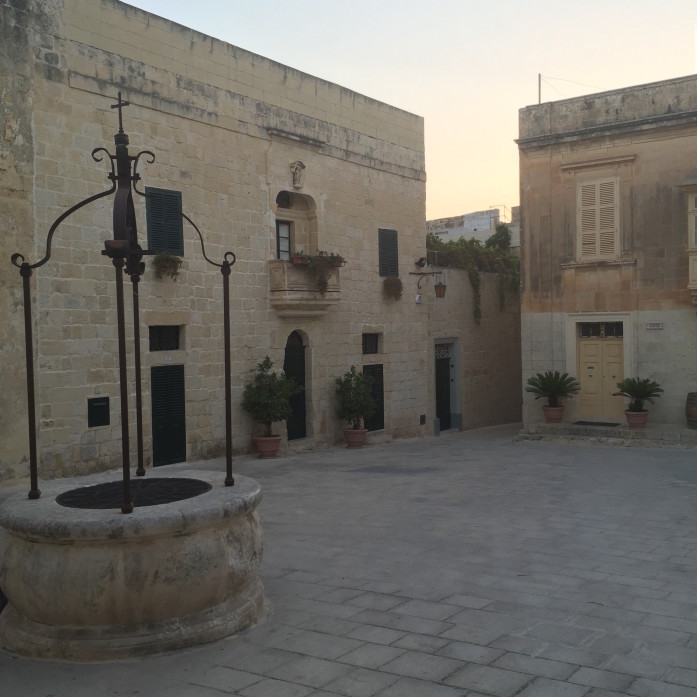
Piazza Mesquita was also used for King’s Landing scenes in Season One of Game of Thrones
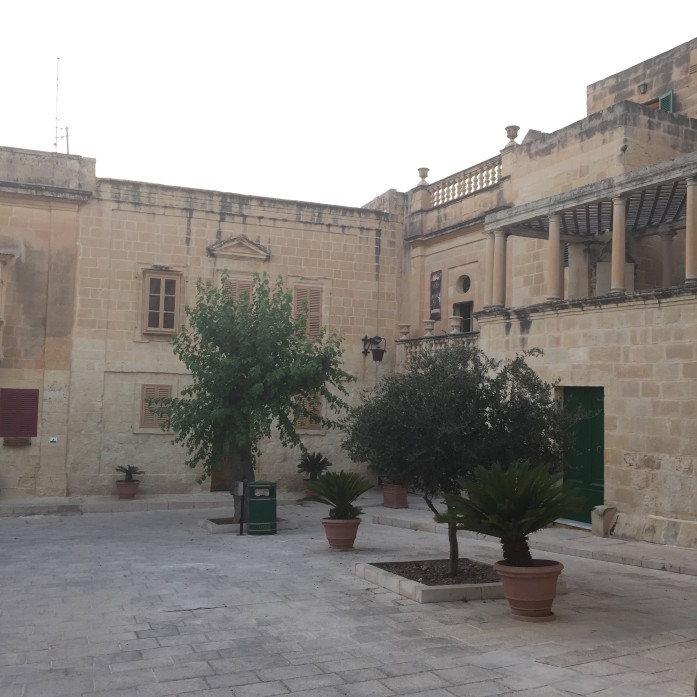
Piazza Mesquita was also used for King’s Landing scenes in Season One of Game of Thrones
BLUE GROTTO, HAGAR QIM AND MJADRA TEMPLES
As a parting shot to this captivating island, I took in two more sights right before going to the airport. After agreeing on a rate with the taxi driver, we set off for a quick stop at a point overlooking the Blue Grotto. From my vantage point, it is a spectacular sight of rock arch that leads into a system of sea caverns. It draws visitors for its unique feature of showcasing various shades and hues of blue on the water as sunlight strikes the area from sunrise until early afternoon. I didn’t have time for a boat ride into the caves, but I was satisfied to leave this on my To-Do list for my return to Malta.
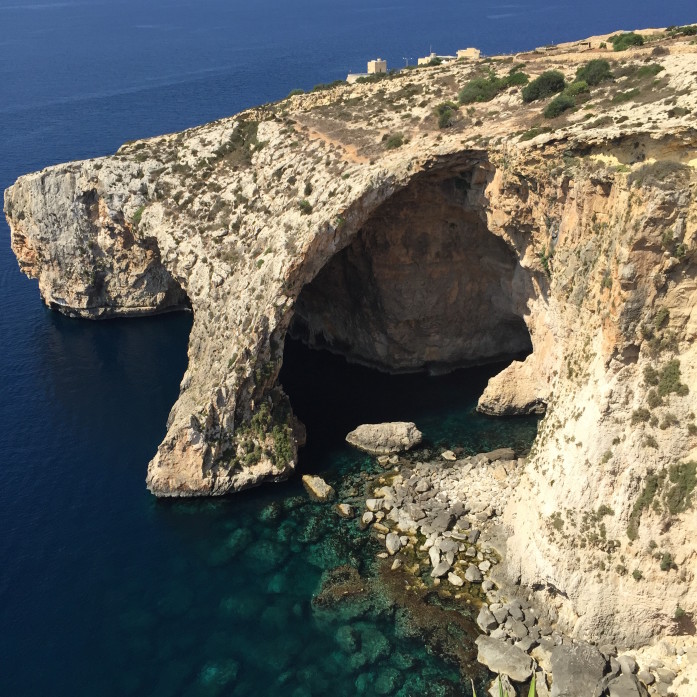
Blue Grotto
Not too far from the Blue Grotto is the archeological site that holds the ancient megalithic temple complexes of Hagar Qim and Mnajdra. The visitor center at the entrance to the site has a 4-D movie that summarizes the history of the site. They also have interactive exhibits, including a fascinating model of how sunlight precisely hits specific spots inside the temples during the spring and autumn equinoxes as well as the summer and winter solstices.
Hagar Qim is estimated to have been erected in th Neolithic period, between 3600 – 3200 BC, which is known as the Ġgantija phase in Maltese prehistory. It is a UNESCO World Heritage Site as part of The Megalithic Temples of Malta and is considered among the most ancient religious sites in the world. It consists of a group of megalithic buildings of limestone, with semi-circular rooms, stone altars, and doorways hewn from rocks. Ancient carved figures have been found in the area during excavation and are housed in the National Museum of Archaeology in Valletta.
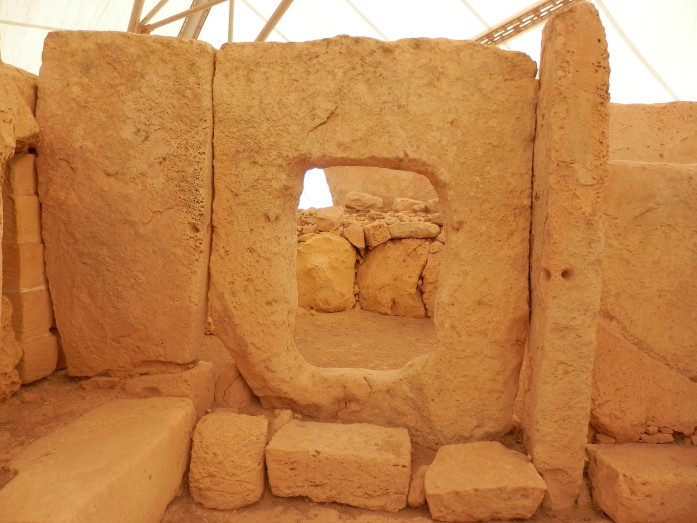
Hagar Qim
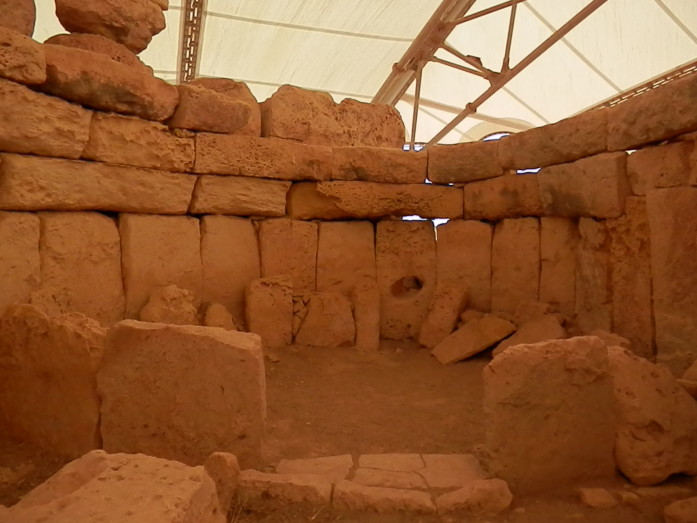
Hagar Qim
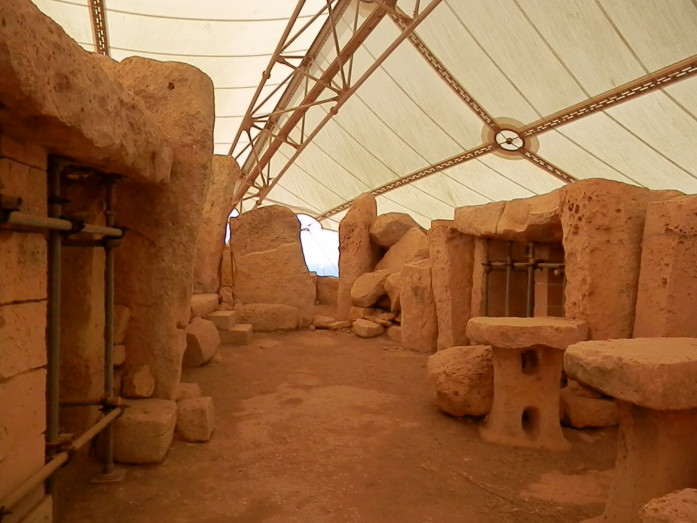
Hagar Qim
500 meters down the hill from Hagar Qim is the Mnajdra Temple Complex. Estimated to be built in the same era as its neighbor, Mnajadra is also composed of several rooms and courtyards built from limestone and appears to have been improved upon with extensions through time. Just as in Hagar Qim, the configuration of the doorways appear to be intentionally designed in order to allow for sunlight to pass through all the way to points deep inside the temple.
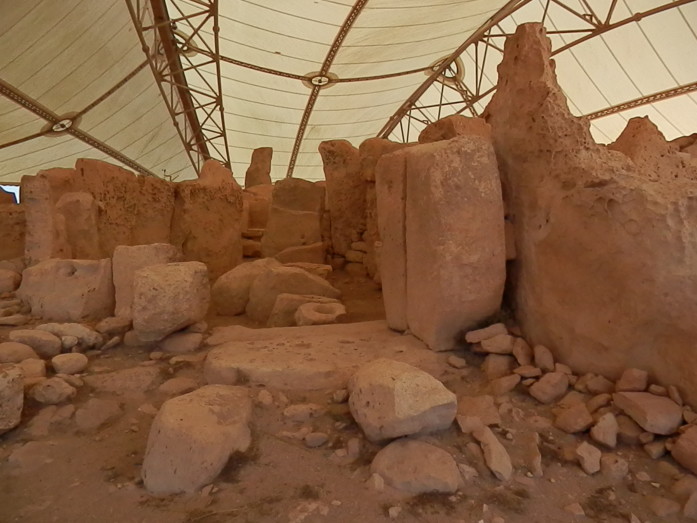
Mnajdra
Walking through the erect columns of rock that have stood there through the millenia, Malta gave me one last surprise and reason to gasp in awe.

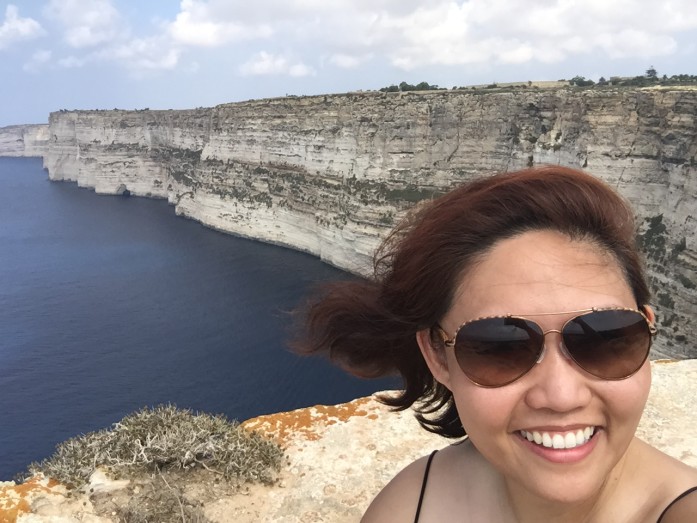
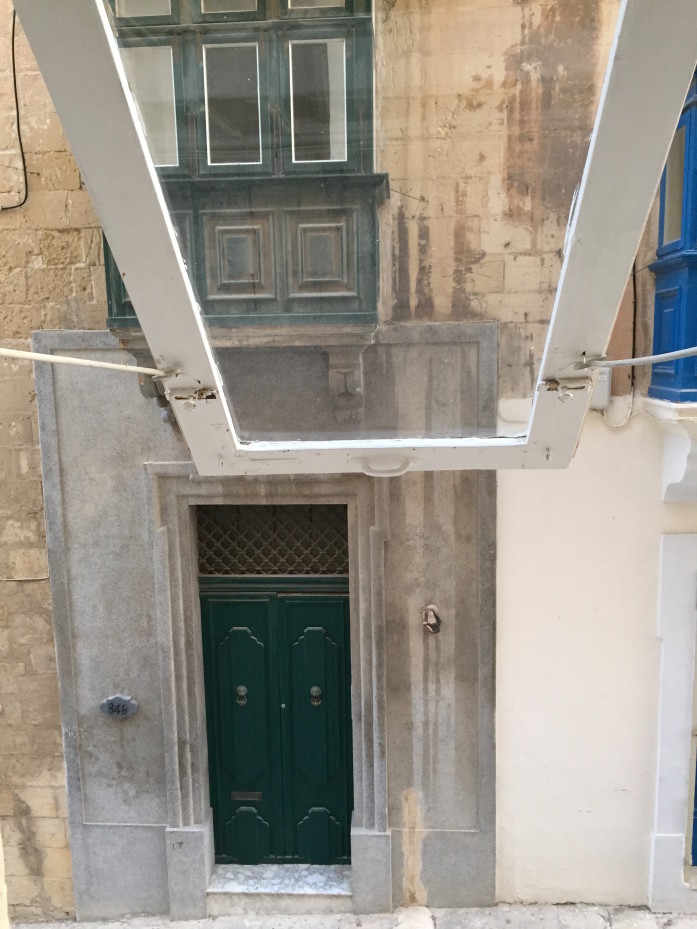

Leave a Reply